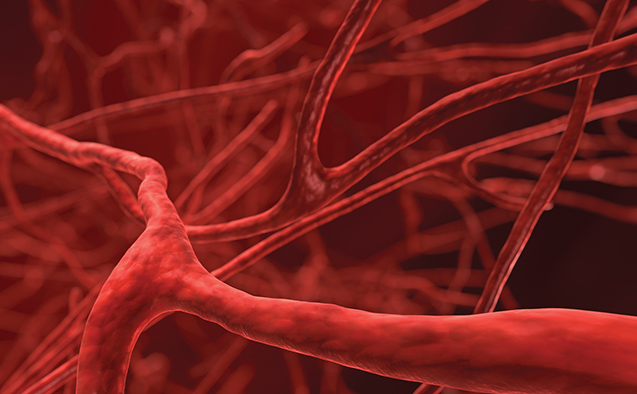WFU physicists, physiologists and physicians developing promising technology to prevent ‘device thrombosis’
NCBiotech grant supports future research

A promising technology developed by Wake Forest University researchers and designed to address a common problem in treating critically ill patients with kidney issues has received a grant from the North Carolina Biotechnology Center (NCBiotech) to support next steps in research and development.
The novel approach uses light and nitrite to reduce the unwanted blood clotting called “device thrombosis” that often occurs during continuous renal replacement therapy (CRRT), a special type of dialysis used in intensive care units.
Professor and Chair of Physics Daniel Kim-Shapiro and colleagues at Wake Forest University School of Medicine found they could use far-red light – close in wavelength to infrared light, but visible to the human eye – to trigger the conversion of nitrite to nitric oxide, a process that affects blood flow and clotting.
“Our initial efforts are promising, but we need more extensive testing and data,” said Kim-Shapiro, who has conducted decades of research on nitrite and its potential applications to cardiovascular diseases.
“Nitric oxide (NO) is an important signaling molecule that causes vasodilation and decreases blood cell adhesion. Shining far-red light on blood when it is flowing through the tubing of the CCRT machine can reduce clotting.” Professor and Chair of Physics Daniel Kim-Shapiro
In 2019, Kim-Shapiro and colleagues from the physics department, the School of Medicine and the University of Pittsburgh published a paper in the journal Redox Biology documenting the enhanced bioactivation of nitrite by far-red light.
“A method for preventing clot formation in extracorporeal devices without bleeding or other complications could improve patient outcomes,” said James E. Jordan, associate professor in the Wake Forest University School of Medicine’s Department of Cardiothoracic Surgery, who is a co-investigator on the project. Jordan has been working with Kim-Shapiro for the last four years. Jordan and Kim-Shapiro also asked critical care physician Dr. Clark Files to join them on the project and provide guidance on clinical matters.
The approach first received funding from the Wake Forest Translational Science Center in 2019.
The idea was then shared with Osama Zahid, director of licensing for Wake Forest Innovations (WFI) which helps researchers develop ideas for novel therapeutics, vaccines, medical devices and diagnostic products.
Zahid worked with the researchers to apply for a patent, and the project received additional funding through WFI’s Commercial Pathway Award program focused on developing commercially viable technologies. Data generated by the Commercial Pathway Award was used to support the NCBiotech grant application.
“The new approach has the potential to reduce the risk of complications and costs for the health care system,” Zahid said. “The researchers are exploring ways to integrate nitrite signaling into CCRT to prevent device failures and reduce patient risks.”
This summer, NCBiotech awarded a Translational Research Grant to Kim-Shapiro and his team. The grant program funds projects that explore commercial applications of university-held life sciences inventions.
“The award is a testament to the team’s dedication and hard work towards continued development of the technology,” Zahid said.
Categories: Research & Discovery
Wake Forest News
336.758.5237
media@wfu.edu
Meet the News Team
Headlines
Wake Forest in the News
Wake Forest regularly appears in media outlets around the world.




